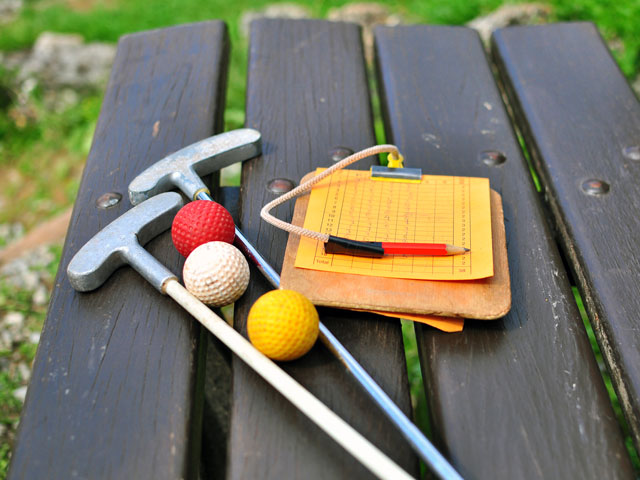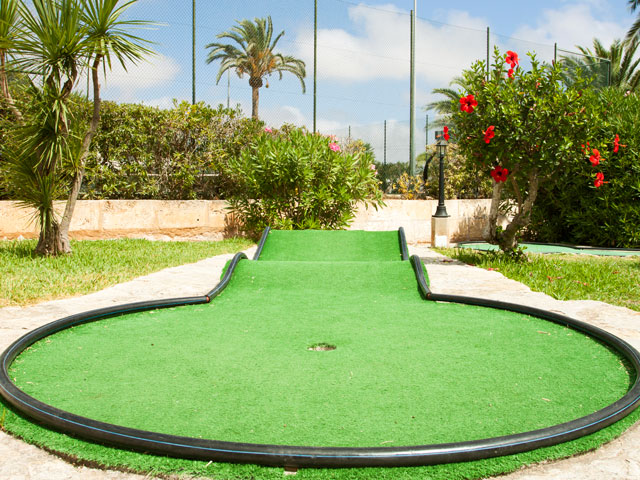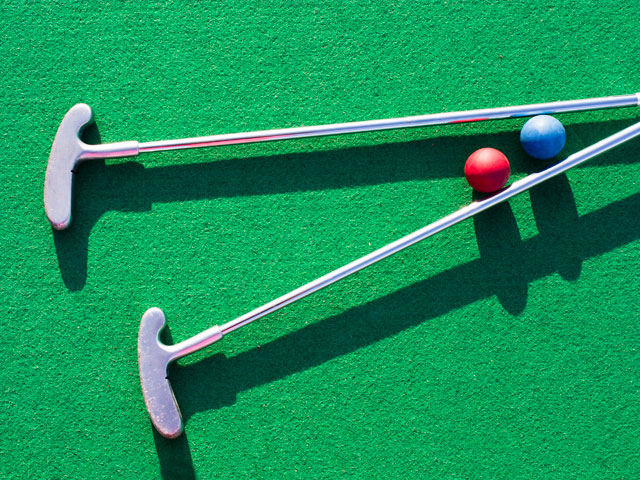
How to Play Mini Golf
Mini Golf is a microcosm of life. The windmill you just can’t get your ball by. The unexpected hole-in-one that brought you joy. The ice cream at the end for a game well played.
Well, that last part doesn’t always work out, does it?
The Objective of Mini Golf
The objective of Miniature Golf is to complete the course with the fewest strokes possible. From the first hole to the last, the goal is to work your putter magic maneuvering through all of the angles and obstacles to sink your ball into the hole with the utmost efficiency and economy of strokes. Some courses even offer incentives for certain trick shots like removing a stroke or two for excellent performance via hole-in-one.
The (Typical) Rules of Miniature Golf
Just like it’s taken-way-too-seriously counterpart, mini golf, or putt-putt as some people like to call it, has a general structure and framework when it comes to rules. Sure, each mini golf course is different from another, but the same general attitude toward golf ball placement, tee shots, and stroke penalties tend to persist. Let’s cover them.
But first, beginners, and doubly so for children who are beginners, are somewhat relieved of following the rules with exactness. Keep that in mind when progressing through your Miniature Golf Course of choice.

Teeing Off
It is typical to find a rubber mat with three holes at the start of a Mini Golf hole. We’ve also seen a scaling back in recent years, with courses allowing players a little more lateral latitude in how they approach the hole. This is especially true in indoor courses such as Monster Mini Golf where the game is played in a rolling fashion with less definition to the start of each hole.
The Six Stroke Limit
Six strokes seems to be the magic number of strokes per hole of play nationwide. Some courses allow you to play your sixth stroke, whereas some encourage you to pick your ball up after your fifth shot, thus sparing you the embarrassment should you not sink the sixth shot.
Caveat: Your group can decide to waive this Six Shot Limit depending on pace of play, groups playing behind you, and of course, the flexibility and generosity of the course.

Players Per Group (or Hole)
Most every course posts the maximum number of people allowed to play mini golf together in a group within their course rules. They’ve figured out, usually through extensive play and an honest assessment of their popularity, just how many people should play at once. While different courses set their own standard, it’s commonly held that a foursome works best. That said, we’ve seen groupings of Five and Six as well.
A good way of determining how many players can be in a group or on a hole at the same should there be no posted rules is to look at the scorecard. Mini Golf Courses are good about having the scorecard reflect the max number of golfers that can occupy the putting green.
One Clubhead Length Rule
The strict rigor of the PGA Tour is a far cry from the gregarious nature of Mini Golf. One could actually argue that Mini Golf is the true gentleman or gentlewoman’s game, as players are allowed to move a ball one clubhead length from a wall, obstacle or otherwise to allow for proper putting.
Our best putting tips for the one clubhead length rule is to focus of short putts that are not overpowered. Not that you should be teeing off like you’re on a 562 yard and you’re shooting for a condor anyway.
This rule is somewhat optional if you’re alone on a miniature golf course or with a group that wants to raise the stakes with a maximum challenge effort.

First Shot Rule
Everyone playing the game of mini golf hits their first shot before any player hits a second. From there, the order of play involves those closest to the hole going first. The rationale here is that those with short putts present a less likely chance of knocking into other people’s balls in their quest to hole the cup.
Some courses adopt different rules of mini golf where this is concerned. Some contend that a ball struck remains in play and suffers any effect (general relocation, entry into a hazard, or sinking into the hole) that occurs as a free, non-stroke counting play. Some suggest that any ball struck return to it’s original location without penalty. Check the rules of your local golf course and adhere to what they say.